Subtotal: 79,750 د.ع
LM317 Adjustable Voltage Regulator 1.25-37V/1.5A
In stock
أي سي منظم جهد LM317 بفولتية اخراج ثابتة يمكن التحكم بقيمتها حسب الرغبة تتراوح من 1.25 الى 37 فولت يتم التحكم بها عبر دائرة بسيطة بمقاومتين متغيرتين للتحكم بها. يوفر المنظم تيار ثابت قدره 1 امبير مع استخدام مشتت مناسب للحرارة المتولدة. منظم الجهد هذا مناسب لأغلب التطبيقات في عالم الالكترونيات والأنظمة المدمجة التي تحتاج الى فولتية ثابتة منظمة لا تتغير وتكون بمقدار لا توفره المنظمات الثابتة الأخرى.
500 د.ع
In stock
The LM317 is a popular adjustable positive linear voltage regulator. It was designed by Bob Dobkin in 1976 while he worked at National Semiconductor. The LM337 is the negative complement to the LM317, which regulates voltages below a reference. It was designed by Bob Pease, who also worked for National Semiconductor. The LM317 is an adjustable voltage linear regulator that can output 1.25 – 37V at up to 1.5A current with an input voltage range of 3 – 40V.
Features:
- Adjustable voltage linear regulator
- 3 – 40V input voltage range
- 1.25 – 37V output voltage
- 1.5A continuous current with 2.2A surge capability
Specifications:
Max Input – Output V Differential: 40V
Maximum Output Current: 1.5A (Typical)
Peak Surge Current (typ): 2.2A
Output Voltage: 1.25V – 37V
Drop-out Voltage: 3.0V (Max), 1.75V (Typ)
Basic Operation:
The LM317 is a 3-terminal floating regulator and does not have a ground pin as is found with most regulators. That allows for potentially very high voltages to be regulated as long as the maximum input-to-output voltage rating of 40V is not exceeded.
In place of a Ground pin, it has an Adjustment pin which uses a resistor divider network between the output terminal and ground to set the output voltage. These can be two fixed resistors if a fixed output voltage is desired, or one of the resistors can be variable potentiometer to allow the output to be adjusted over a range.
Unlike typical 78XX type regulators, the LM317 does require a minimum load current in order to fully regulate. This is typically less than 10mA so it is not typically an issue for most applications. A small load resistor could be placed on the output to guarantee a 10mA draw if was an issue.
The basic system does not necessarily require bypass capacitors, but if using it at a fair distance from the supply that is providing the input voltage, then a 0.1uF ceramic input filter capacitor should be added. A 1.0uF Tantalum or 20uF or larger electrolytic output capacitor can also be added to improve transient response if desired.
A basic circuit for hooking the LM317 up with an adjustable output is shown below.
Power Dissipation:
Linear regulators have less ripple on their outputs compared to DC-DC converters that can be used for the same basic purpose, but the trade-off is that the linear regulators also tend to dissipate more heat in the process. The reason is that the linear regulator uses a series pass transistor on its output to drop the excess voltage.
The power dissipation of a linear regulator is dependent on the difference between the input voltage (Vin) and the output voltage (Vout) along with the amount of current that is being drawn from the regulator. The larger the voltage difference is between Vin and Vout, the higher the power dissipation will be which limits how much current can be drawn from the device.
The power dissipation of the LM317 device is easily calculated as
Power Dissipation = (Vin – Vout) x Iout.
If the LM317 input is 15V and the output is adjusted to 10V and it is providing 1A of current, then Power Dissipation = (15V – 10V) * 1A = 5W. The LM317 TO-220 package will need to dissipate 5W of power. Under typical conditions, the device can dissipate about 1 – 1.25W before a heat sink becomes necessary, so in our example here, the device would definitely need a heat sink. Maximum output current without a heat sink in this case would be limited to about 250 – 300mA and the device will be running in the range of 85-95°C.
If you instead ran the LM317 off a 12V input, Power Dissipation = (12V – 10) * 1A = 2W. Still pretty warm, but much more manageable than 5W. With no heatsink you could draw 500-700mA.
As a general rule, you always want to use as low of an input voltage as possible to minimize power loss though the device and maximize the output current available.
Notes:
1. The tab of the LM317 is common with the Output pin.
2. Under high current loads or with large input to output voltage differentials, the device can get very hot, so use care when handling.
Package Includes:
1 x LM317 Adjustable Voltage Regulator
Based on 0 reviews
Only logged in customers who have purchased this product may leave a review.


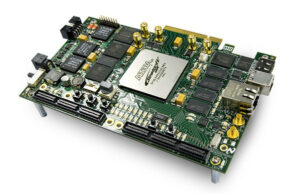



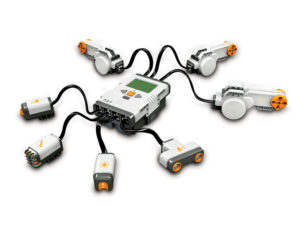
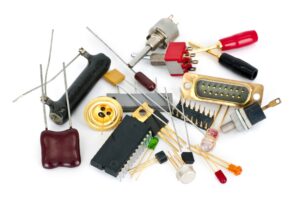
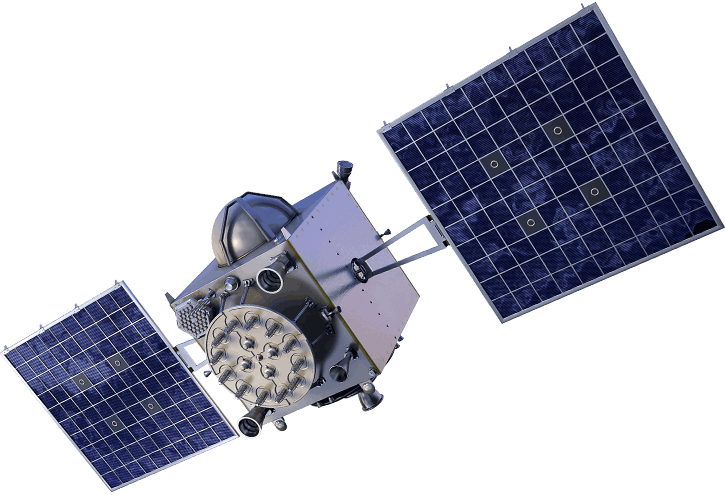

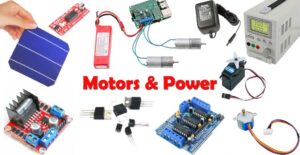
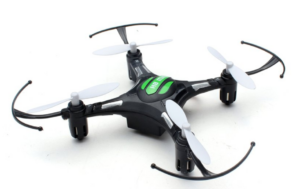

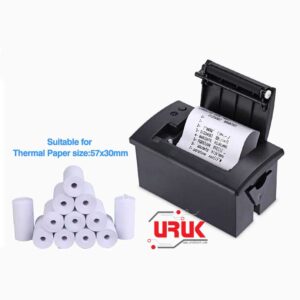 TTL Embedded Thermal Printer with 4 paper rolls
TTL Embedded Thermal Printer with 4 paper rolls 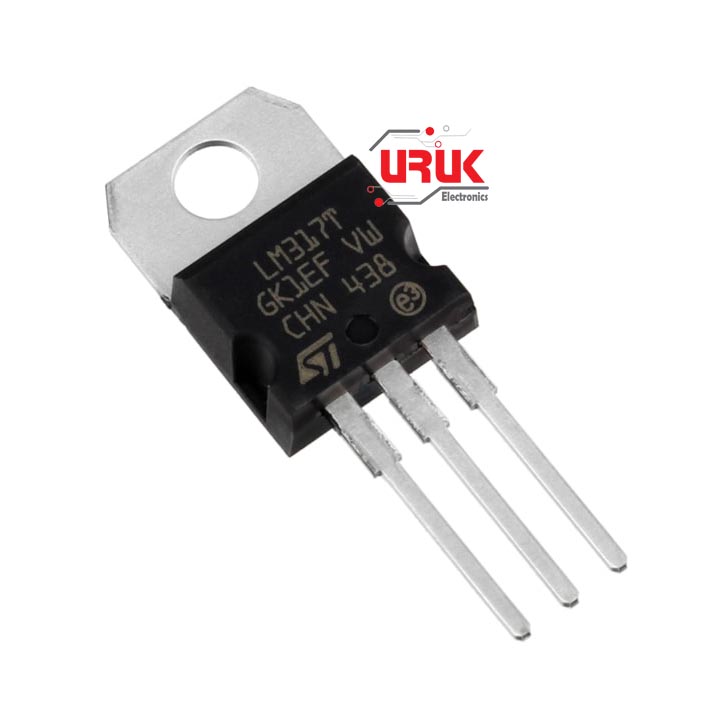
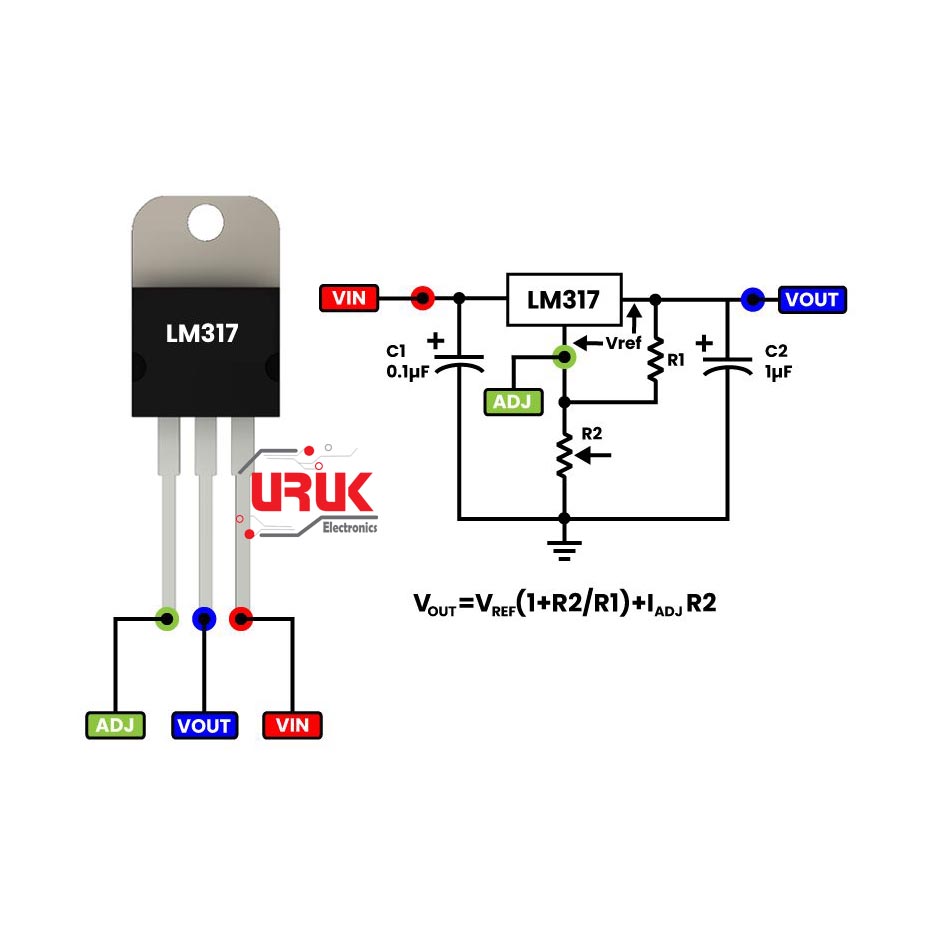
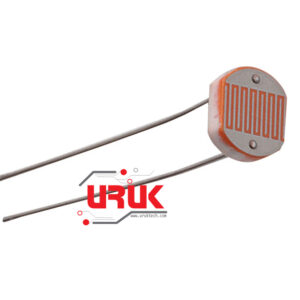
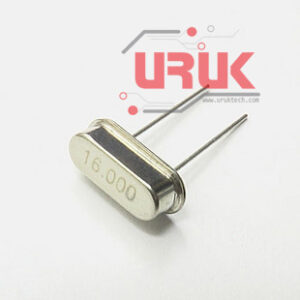
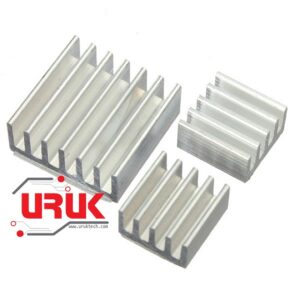
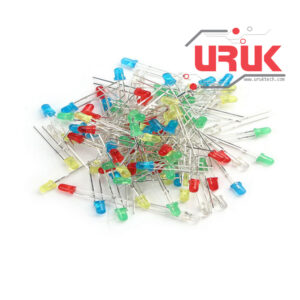







There are no reviews yet.